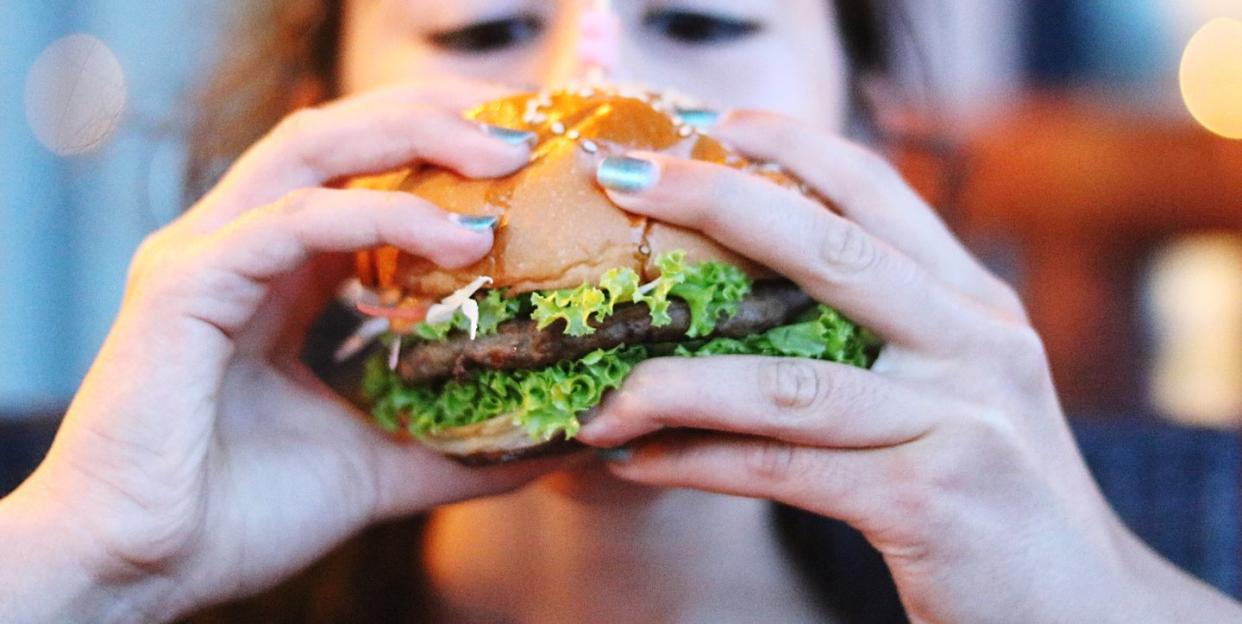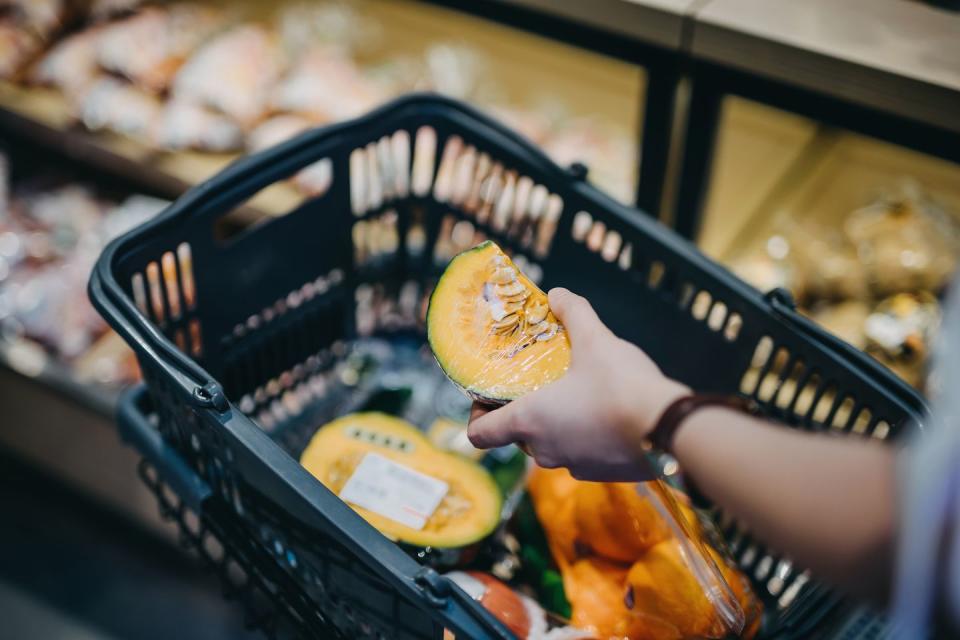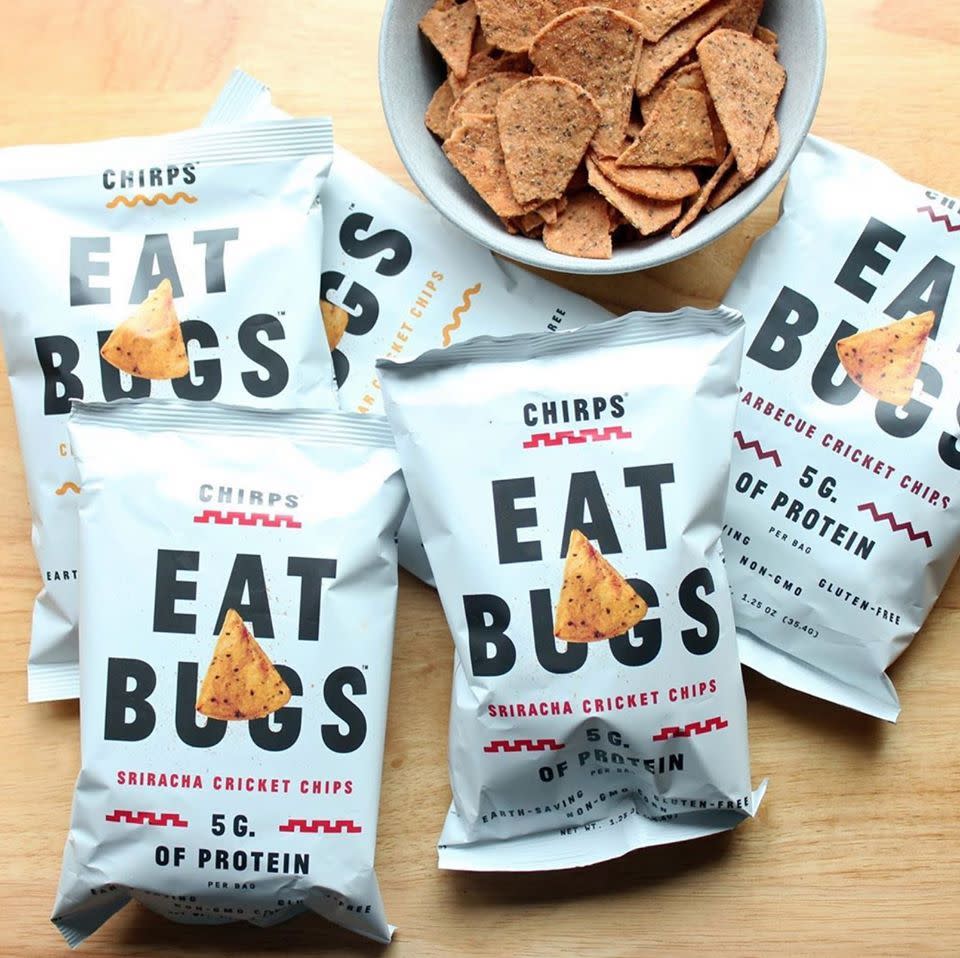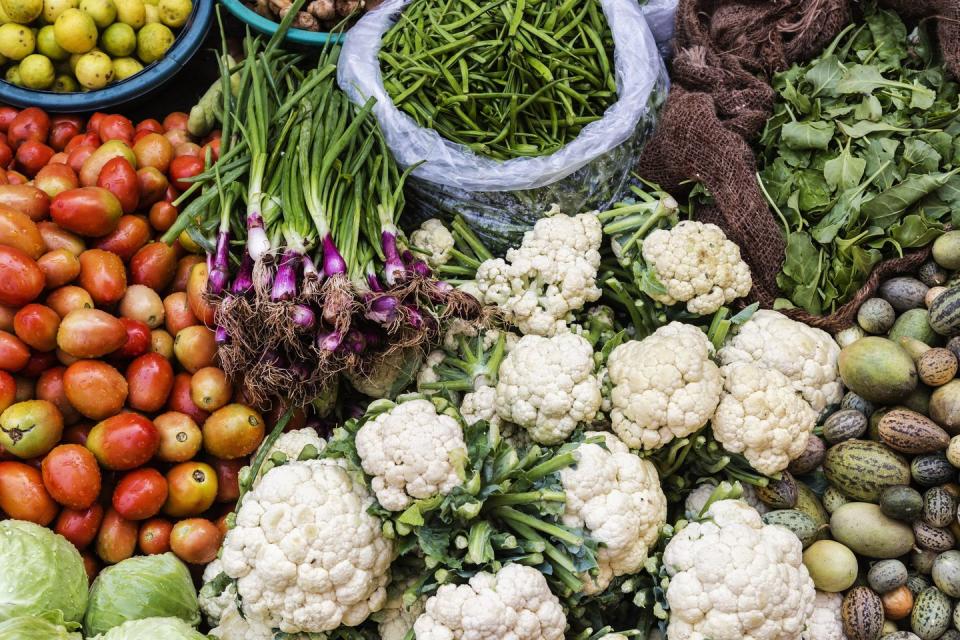Experts Predict *Everyone* Will Be Eating Crickets By 2025

At the beginning of the aughts, kale was a nobody. You didn’t know how to pronounce kombucha. (Maybe you still don't?) Pumpkin spice was just a new Starbucks flavor, not yet a way of life.
As 2020 gets going—the start of a brand new decade—we wanted set out to discover what the next five years of food would look like...because it’s fun to know stuff before anyone else does. Here's what the experts had to say, plus a few educated guesses of our own.
Don't judge a fruit by its cover.

Rather than choosing produce that looks good to the naked eye, we’ll be able to choose vegetables based on the nutrients they have in them. TeakOrigin, a food data company, uses spectroscopy—the interaction between matter and electromagnetic radiation—to measure the nutrient levels in a fruit or vegetable. “Nutrients are gone if produce sits too long on the shelf,” says Hilary Cunningham, Product Director at TeakOrigin. “We can take a specific apple and tell you the exact amounts of nutrients it has.”
Personalized diets trump one-size-fits-all ones.
Grocery stores are already packed with foods for specific ways of eating: keto, South Beach, Paleo, low-cholesterol. But what if a diet was specific to you and no one else? “There are companies that create metabolic challenges to see how your body handles and processes food. Eat this shake or muffin with specific known nutrients and send blood samples in before and after. They analyze them and can understand the way your body reacts to give you feedback on what you should eat,” says Andy Narotsky, a Product Development Scientist at Campbell’s Soup Company. From this information, companies could develop eating “profiles,” then label foods according to which profile the levels of protein, carbohydrates, and fats work best with.
Crickets are...delicious?

Maybe you know someone who ate a cricket in another country once. But as agricultural land becomes sparse and the environmental consequences of producing animal proteins worsen, you might find yourself biting into a cricket energy bar. “The advantage with cricket protein is that you don’t need any land. With increased urbanization, you can have a vertical cricket farm in an office building. It can be an incredibly local source of protein, and they barely need any food or water, so it’s great for sustainability,” says Narotsky. By grinding the crickets into cricket flour, food makers could add complete, allergen-free protein to just about anything: pancakes, breads, even pasta sauces. While today you can buy Chirps Chips, Exo Cricket Protein Bars, or Salsa Verde Chiridos, its not unreasonable to think we cricket burgers could eventually be the new Impossible Burgers.
Eastern medicine goes even more mainstream.
While Ayurveda is currently “definitely California stuff,” as one expert put it, the natural style of medicine that started in India about 3,000 years ago may well make its way to all of our kitchens. Johns Hopkins Medicine’s online Health Library explains it: “Based on the idea that disease is due to an imbalance or stress in a person's consciousness, Ayurveda encourages certain lifestyle interventions and natural therapies to regain a balance between the body, mind, spirit, and the environment.” People who believe in Ayurveda medicine believe food plays a large part in your overall well-being and can even put you in a specific mood. While teas and supplements can be found in specialty stores, be ready for cookbooks telling you how to cook an entire Ayurveda diet and prepared foods of any kind promising to balance your Dosha (your body’s energy).
Food for every occasion.

After you work out, you drink protein. After a night out, you eat a bacon and egg sandwich. In five years, we’ll have specific foods to eat after doing…anything. “When you get a cold? Here is a product specially designed to deliver those nutrients you need to recover. Pregnant women need certain nutrients, here is the precise food that delivers that,” says Cunningham. Companies like Agni Provision are already working on creating postpartum foods. Narotsky adds: “This is part of the continuing trend toward functional everything: I want everything I consume to do something for me.”
The world is on your plate.
As the world changes, so too will things we are able to get on our plate. When you’re trying to anticipate what is going to come, you have to think about what the big social macro changes coming are, too. Things like global warming, economic change, or international strife could change our values—and what’s available to us. Fish may become less available and as growing regions may change leading us to ditch more resource intensive crops for “More pulses and legumes, for the proteins and fiber. They’re much easier to grow,” says Nielsen. Economic changes and conflict can also change our diets, “We’ve seen a real growth of food of Syria in part because of refugees who are finding their way to the United States and participating in programs helping them make food for their communities and to make a living in food halls and little catering programs.” Whatever happens in the world, we will see it in the news, and on our plates.
Cold, very cold, or extra cold.

As summer gets hotter and winters get colder, the temperature of our foods might make them more expensive. Says Narotsky, “Temperature is a lever that we traditionally don’t charge for. But as climate change continues, will the demand for cold bottled water increase in hotter summers? Then the prices might.” You might pay more for a “super cold” popsicle when “standard cold” isn’t enough.
The next pumpkin spice is...
Actually, if we knew what the next insane (and insanely lucrative) flavor trend would be, we wouldn’t tell you. But it ain’t horseradish, and it’ll likely come from somewhere farther than Starbucks: “We keep digging deeper into the cultures that we are familiar with, Mexican regional food, central American, possibly even South American with a deeper understanding of what’s unique and specific,” says Kara Nielsen, a food trend expert from Oakland, CA. While the differences may not be massive, we’ll come to appreciate the intricacies of Indonesian versus Malaysian versus Micronesian food. “Kind of like barbecue, when we think about American barbecue someone from Tennessee and North Carolina will really beg to differ about the styles.” So, look for Chicken Micronesia sandwiches with pineapple, onion, and coconut, or spicy cheesy Peruvian potatoes, papas a la Huancaina.
Garden variety vegetables are so yesterday.

You want an apple? Choose your varietal: Red Delicious, Gala, Fiji, the recent Cosmic Crisp, ten others. But you want zucchini? The “zucchini” is over in that bin. No more. As consumer interest in food continues to increase so too will our options. “There has been a lot of progress in the past decade in standardizing agriculture, but I think there is going to be a bigger market for different varietals of vegetables,” says Narotsky. Your simple search for cauliflower will soon lead you to Depurple (which has the same anti-oxidants as red wine), Self-Blanching Snowball (with leaves that self-wrap around the head to protect it and keep it pure white), or Cheddar Hybrid Cauliflower (bright orange with 25 times the beta carotene of white cauliflower).
You Might Also Like

